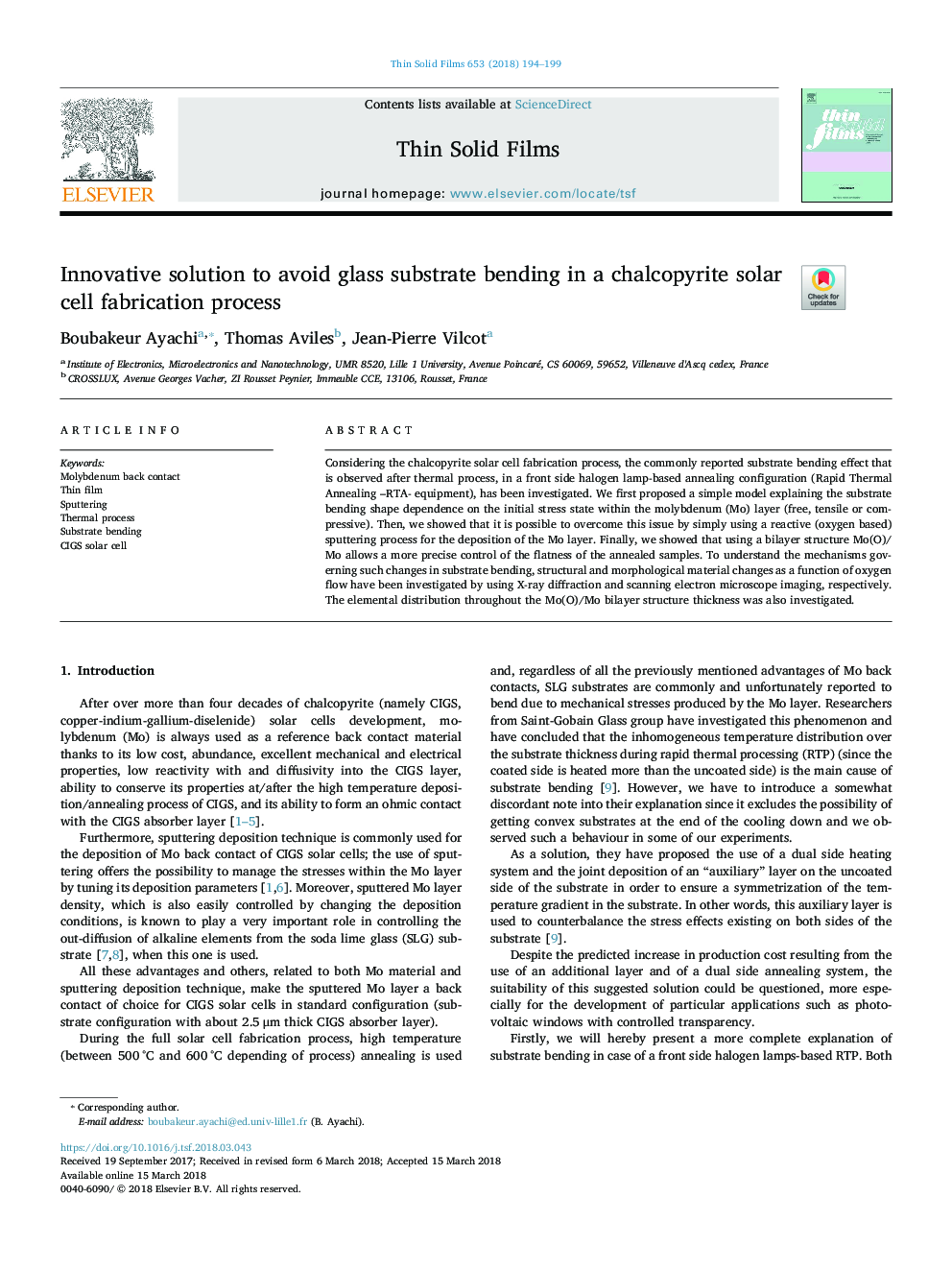| Article ID | Journal | Published Year | Pages | File Type |
|---|---|---|---|---|
| 8032706 | Thin Solid Films | 2018 | 6 Pages |
Abstract
Considering the chalcopyrite solar cell fabrication process, the commonly reported substrate bending effect that is observed after thermal process, in a front side halogen lamp-based annealing configuration (Rapid Thermal Annealing -RTA- equipment), has been investigated. We first proposed a simple model explaining the substrate bending shape dependence on the initial stress state within the molybdenum (Mo) layer (free, tensile or compressive). Then, we showed that it is possible to overcome this issue by simply using a reactive (oxygen based) sputtering process for the deposition of the Mo layer. Finally, we showed that using a bilayer structure Mo(O)/Mo allows a more precise control of the flatness of the annealed samples. To understand the mechanisms governing such changes in substrate bending, structural and morphological material changes as a function of oxygen flow have been investigated by using X-ray diffraction and scanning electron microscope imaging, respectively. The elemental distribution throughout the Mo(O)/Mo bilayer structure thickness was also investigated.
Related Topics
Physical Sciences and Engineering
Materials Science
Nanotechnology
Authors
Boubakeur Ayachi, Thomas Aviles, Jean-Pierre Vilcot,
